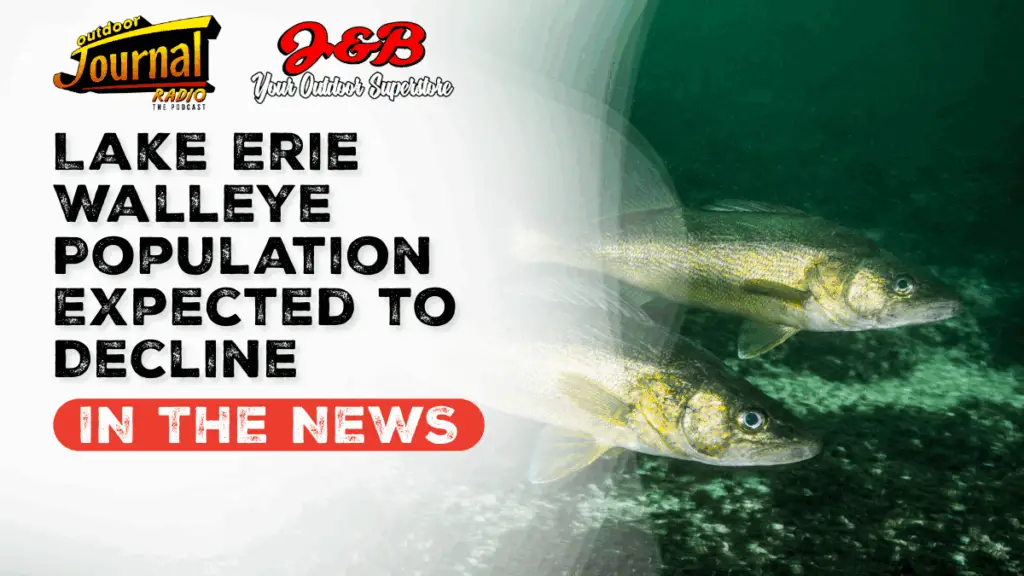Lake Erie’s prized walleye population is projected to decline for the first time in years, following a notably weak hatch in 2024, the lowest since 2016. Fisheries scientists and lake managers say that while adult numbers remain strong for now, the disappointing spawn could affect angler success and ecosystem balance in the near future.
According to the Lake Erie Committee’s Walleye Task Group, the population of catchable walleye (age 2 and older) is expected to dip from 80.9 million in 2024 to 77.4 million in 2025.
While that number may still sound abundant, researchers are keeping a close eye on the latest year class, which plays a crucial role in sustaining both the fishery and the recreational economy in years to come.
“Walleye are one of Lake Erie’s most important species — not just for anglers, but for the health of the whole food web,” said Dr. Jeff Tyson, a longtime advisor to the Lake Erie Committee.
The 2024 hatch rate was just 19 fish per hectare, according to Ohio DNR’s Fisheries Division — a sharp drop from the long-term average of 58 fish per hectare. For comparison, 2022 and 2023 were banner years, producing strong year classes that helped fuel recent angler success.
So, what went wrong?
Experts point to a “mismatch in plankton timing” — a phenomenon where walleye hatchlings emerge before or after peak zooplankton availability. Without enough appropriately sized prey at the right time, larval survival rates can plummet.
“There’s a narrow window right after hatching when those fry need food,” explained Katelyn Watson, a fish ecologist with the Great Lakes Fisheries Commission. “If the lake is too warm or too cold at the wrong time, or if zooplankton blooms early, that window slams shut” (Great Lakes Now).
Climate variability may be playing a role. Warmer-than-average spring temperatures and erratic weather in March and April are being studied as potential stressors affecting spawning behaviour and food web dynamics.
Despite the poor hatch, the Lake Erie Committee has set the 2025 Recommended Allowable Harvest at 11.37 million fish, maintaining consistency with previous years (Lake Erie Committee WTG Executive Summary, 2025).
Agencies emphasize that recent strong year classes — particularly from 2019 and 2021 — are still contributing heavily to the fishery.
“This isn’t a crisis, but it’s a caution flag,” said Tyson. “We’ve had a few great years, and anglers have gotten used to near-record catches. But fisheries are cyclical, and this is a reminder that strong management and good science are key to keeping Lake Erie productive.”
For now, anglers heading into the 2025 season should expect decent fishing thanks to a robust adult population — but come 2026 or 2027, the impact of the 2024 hatch may start to show in fewer legal-size fish.





One Response
This article doesn’t mention anything about the vast commercial fishing that takes thousands of metric tonnes out of Erie every year.